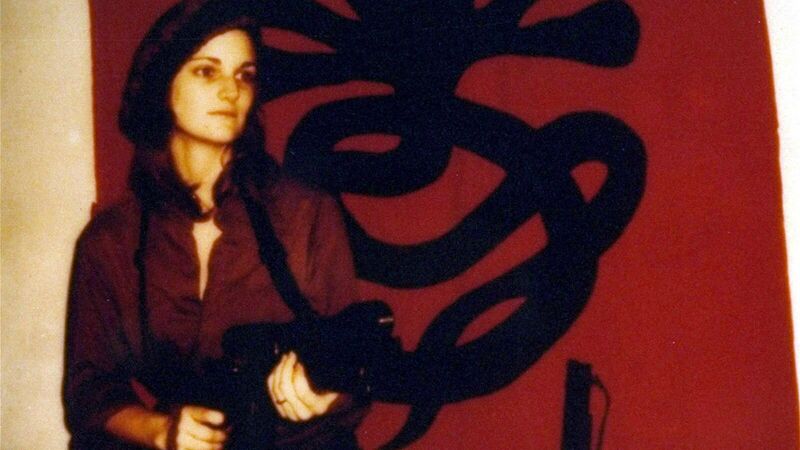Gareth O'Callaghan: We’re facing a fearful future if radicalisation is allowed fester

American heiress Patty Hearst poses for a picture after she had joined the SLA, a small urban guerrilla group active in the US in the 1970s.
It’s 50 years since the FBI opened an investigation into one of the strangest cases ever to capture the imagination of a global audience.
On a cold Monday night in February 1974, there was a knock on the door of an upmarket apartment at Benvenue Street in Berkeley, California. A group of men and women carrying guns burst into the small hallway. Their target was a 19-year-old college student whom they dragged out and threw into the boot of their car, after beating up her fiancé who had opened the door. The gang then drove away at high speed.
Patty Hearst, whom no one outside of her family and friends had ever heard of, was about to become an enigma in a fugitive case that made headlines for over 18 months; a fanatical saga that would give authorities an insight into how a well-balanced peaceful teenager could become radicalised and converted to extremism in a very short space of time.
Hearst had been kidnapped by a group of domestic terrorists, calling themselves the Symbionese Liberation Army, or SLA, led by escaped convict Donald David DeFreeze. The cult-like Marxist group, small but heavily armed, was made up of men and women, blacks and whites — insurgents and extremists from an assortment of backgrounds who had one aim: to provoke a guerilla war against the US government and overthrow what they called the “capitalist state”.
So as to grab world attention, they kidnapped the granddaughter of newspaper magnate William Randolph Hearst, one of the wealthiest men in history at that time and a powerful media tycoon. One of the ransom demands from the gang, in return for the release of the student, was a payment of millions of dollars by the Hearst family in food donations for the poor and homeless.

On the advice of the FBI, the Hearst family refused to pay. All went silent for two months, until April 3 when the SLA released an audiotape of Hearst’s voice claiming she had joined their struggle to free the oppressed, condemning the “pig power culture” that deprived the underdog. On the recording, she rejected her wealthy family. She also chose a new name — Tania.
Twelve days later, she turned up on bank surveillance cameras brandishing an automatic assault weapon with five other members of the gang, engaging in an armed robbery. None of them wore masks. Hearst yelled orders at customers while providing armed cover to the rest of the gang.
The SLA believed their efforts to turn the newspaper heiress into a role model for their planned revolution had worked. Except it hadn’t, and DeFreeze had underestimated the prowess of the FBI who launched a massive operation to track down Hearst and her captors, who funded their revolutionary vision through a series of bombings and bank robberies.
Despite one of the most intensive cross-agency searches throughout the 52 states, including a shoot-out between members of the gang and LA police which left six of the terrorists including DeFreeze dead, Hearst avoided arrest until September 1975, when she was finally caught in San Francisco.
In her trial, which was as dramatic as the kidnap and the ensuing search, Hearst claimed she had been tortured, raped and brainwashed while being held hostage. She also claimed she was forced to take part in their deadly crimes.
She was found guilty and sentenced to seven years in prison.
Two years later, President Jimmy Carter commuted her sentence. She was later pardoned. However, the image of the young heiress as an armed revolutionary would become a lifelong reminder of the notorious insurgencies that swept through the turbulent 1970s America.

In his book, Searching for Patty Hearst, journalist Roger Rapoport described Hearst as an unlikely revolutionary, a sheltered college student who had largely avoided the radical politics swirling through the university city at the time.
A radicalised victim or a willing guerilla? That’s the enduring question that has fuelled the argument for over half a century. Hearts and minds still remain divided, with many believing she experienced a political awakening during her time in captivity; while others point to a textbook case of Stockholm syndrome.
Hearst is now 70 and has rebuilt her shattered life, spending her days now raising award-winning show dogs. But the mystery surrounding her lost 19 months as Tania will forever live on.
In her own words: “They called themselves an army. They were planning on recruiting more armies. They were planning on splitting up and forming smaller cells and going into different areas, recruiting more members and just growing until they had started a full scale war in this country.”
Modern radicalisation is rapidly becoming the new politics, and the internet is its “safe place”, given the relevance of online environments in radicalising lone actor terrorists.
In March 2019, Australian Brenton Tarrant murdered 51 worshippers in consecutive mass shootings at two busy mosques in Christchurch, New Zealand. He live-streamed the first shooting on Facebook. A year before his attack, he had posted publicly online that he had planned to do so. No one in authority appeared to take any notice of the extremely threatening statements he was making so publicly.
Tarrant had travelled widely in the five years before his terrorist attacks, becoming more increasingly hateful of Muslims. At the heart of his repugnant mindset was a race war that he believed would bring about a lasting age of reimposed segregation.
Long before his attack, Tarrant was calling for mass violence against people of colour. He made it clear in his online posts that white nationalist extremists should target innocent victims in locations of emotional significance, such as places of worship. Attacking unarmed people in a church is a “very simple tactic”, he said, describing it as necessary to provoke people of colour into retaliating.
Tarrant pleaded guilty the following March to 51 murders and 40 attempted murders and engaging in a terrorist attack. He was sentenced to life imprisonment without the possibility of parole — the first such sentence in New Zealand. His attacks were motivated by a combination of white supremacy beliefs and anti-immigrant sentiments.
Unfortunately Ireland still mostly basks in an illusory mindset that the Patty Hearsts and the Brenton Tarrants of this world don’t exist here — a jaded belief that “it couldn’t happen to us”. It could, and it is, and it most likely will happen on a much more destructive scale quite soon.
Gardaí said in court that they believe the 16-year-old teenager charged with stabbing army chaplain Fr Paul Murphy at Renmore Barracks in County Galway on August 15 last has a “radical Islamist mindset” and had been “radicalised” online.
Research shows that radicalisation is a four stage process: The person identifies with a group whose beliefs resonate with his. Over time he reaches a point where his entire thinking process is re-aligned. He’s then groomed by his peers who draw him further down the “rabbit hole”. Finally he becomes involved in committing terrorist acts.
We need to act now to prevent such acts taking place here. Less than two weeks ago, garda commissioner Drew Harris publicly stated that Ireland is facing a very real terrorist attack risk.
If radicalisation is allowed to become the new politics, then every one of us, of every colour, is facing an unthinkable future.











